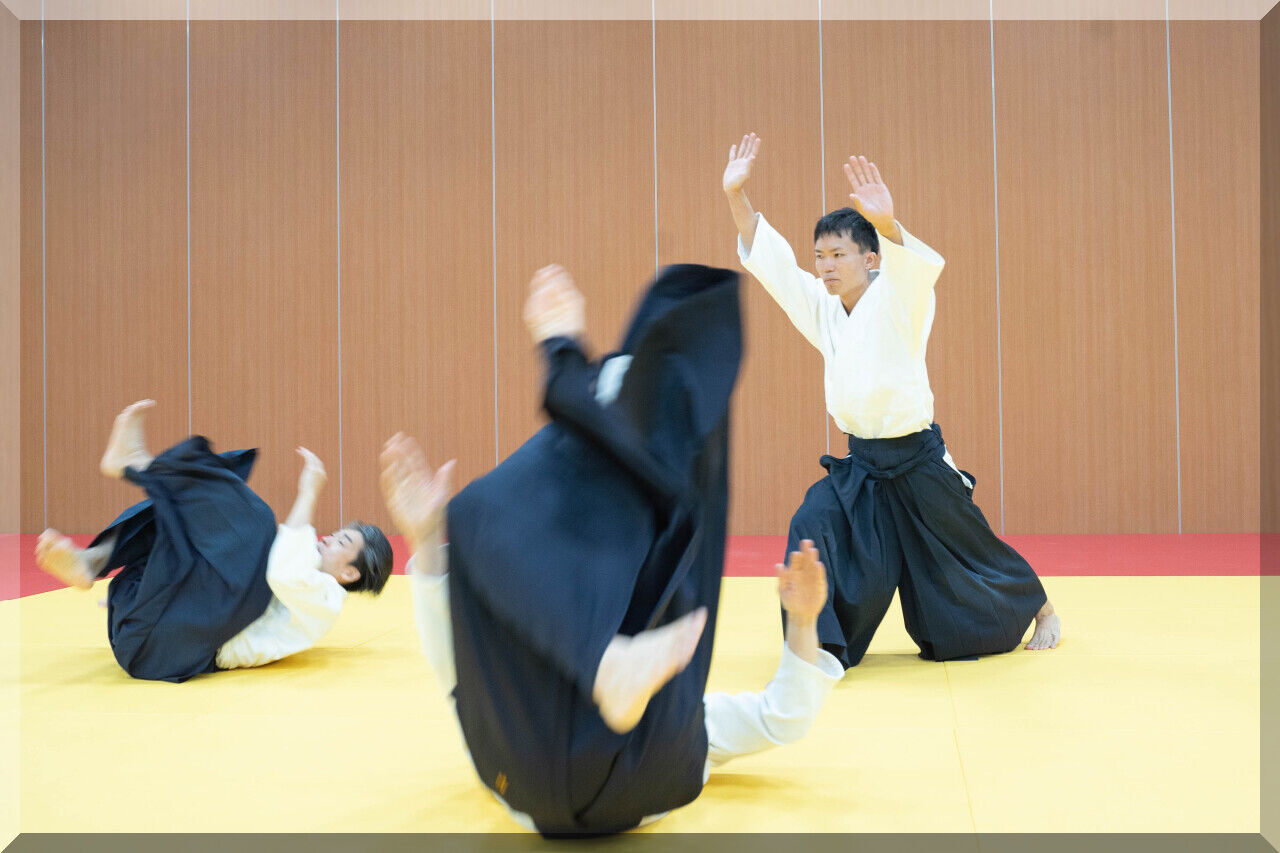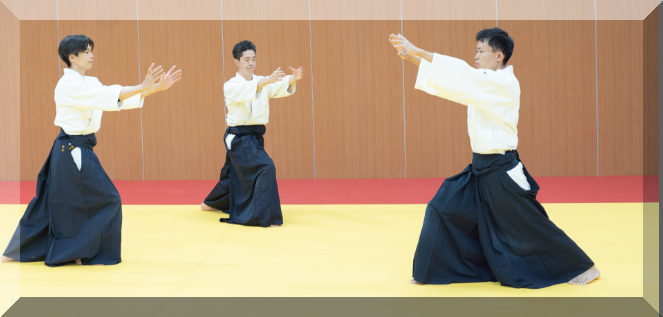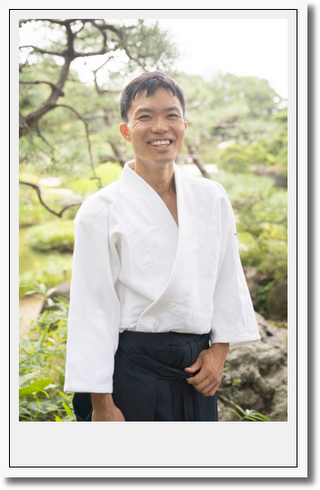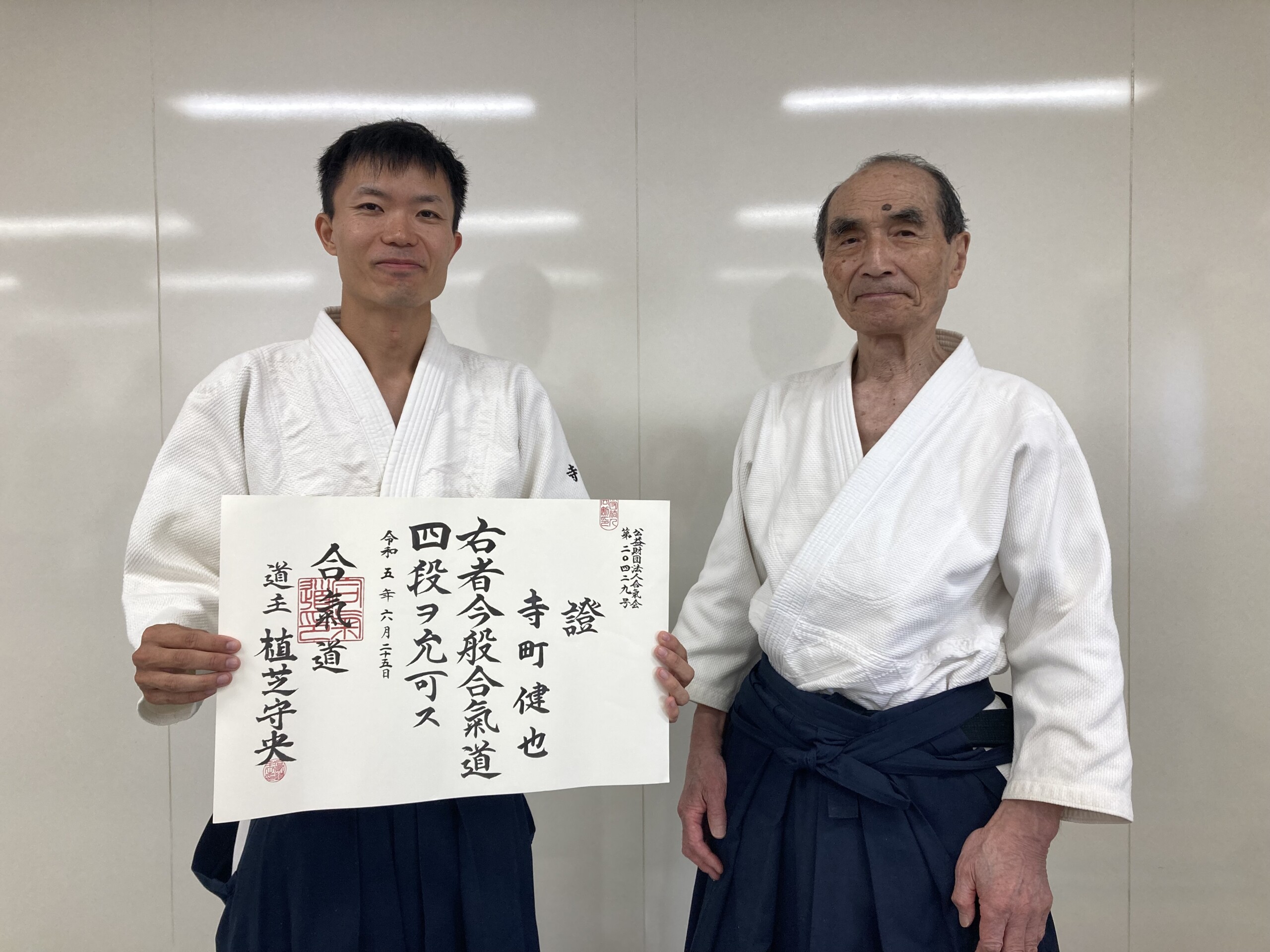 About the Instructor
About the Instructor
【TERAMACHI Ankō】
- Born August 18th, 1986 in Hashima City, Gifu Prefecture
- Graduate of Hitotsubashi University (B.A. in Economics) and Gifu Prefectural Gifu High School
- Worked in hospital consulting and an environmental nonprofit (ocean plastic waste)
- Work: All things related to Aikido (*specialists are rare even in Japan)
- Hobbies: Farmland restoration and reuse, Turtle caretaking, Audio media, Bowling, Litter pickup, Biotope conservation and management, Saxophone
- Ongoing plans: Aikido class using sign language for those with hearing disabilities.
【Aikido】
- Joined Aikido Jiyugaoka Dojo (in Tokyo) hosted by Hiroshi Tada Shihan (⊕external link)
- (2017-8) Committed full-time to Aikido. Trained in Gessoji dojo, Yomiuri Culture Jiyugaoka, Italy, and Hiroshima.
- (2017-22) Took part in instruction of aikido classes at Yomiuri Culture Jiyugaoka
- (2019-22) Took part in instruction of Kids Class at Jiyugaoka Dojo
- (2022-) Committed full-time to Aikido.
- (2022) Founded “Aikido Shishin-kai” upon return to Gifu
- (2023) Joined Gifu Prefecture Aikido Alliance
- (2023) Granted rank of yon-dan (4th Dan)
- (Since 2017) Studied misogi breathing (purification) and zazen (meditation) in “Ichiku-kai dojo” (⊕external link)
 Our Goals
Our Goals

Aikido is an excellent practice method for learning to use your “mind and body.”
Using one’s “mind and body” applies to achieving results in any field. Therefore, continued Aikido practice helps one gain competence and progress in other fields.

We train seriously but also in a free and lively manner. Through such training, our first aim is for everyone to “like” Aikido.
As you continue to enjoy Aikido, it will also start to take life in different situations of your daily life.
These experiences should further develop your love for Aikido. Our goal is to become such a space.
Aikido Shishin-Kai TERAMACHI Ankō
 Characteristics of Shishin-Kai
Characteristics of Shishin-Kai

(1) Value the meaning and purpose of training.
Aikido is a martial art many people continue to train in for a long time. At the same time, I have witnessed many individuals stop coming to classes before appreciating its essence.
One of the reasons for this seems to be Aikido’s difference from other modern martial arts (such as Judo, Kendo, and Karate) and sports. Aikido does not involve competitive matches or scores, which can make it easy to lose sight of the meaning and purpose of training.
At Shishin-Kai, we strive not to practice unquestioningly but to convey the significance and objectives of training, as well as the martial background, along with the physical movements.
We aim for as many dojo members as possible to understand the essence of Aikido. We aim to be a place where dojo members can enjoy and continue their practice for a long time.

(2) Training without injuries
Aikido can be considered a “martial art with few injuries” because it does not aim to harm the training partner. However, continued training with incorrect body movements and mindset can lead to injuries to oneself or your partner.
At Shishin-Kai, we aim not only to prevent injuries to training partners but also to ensure that individuals can enjoy and continue training for a long time without injury.
To achieve this, we explain the mechanisms of injury, proper body movements to avoid injuries, and guidance on selecting and using supportive equipment to prevent injuries.

(3) Ki no renma (“Cultivation of Ki”)
-
The essence that thrives in all fields!
-
We practice “breathing techniques” in all classes.
The essence of our practice is “Ki no renma”, developed through many years of research and practice by Hiroshi Tada Sensei (Instructor of Aikikai Hombu Dojo, 9th Dan, the highest rank). It is a practice method characterized by “breathing techniques and fluid movements.”
“Ki no renma” is also the essence that thrives in all fields. Once you become proficient in Aikido through this method, you can naturally improve in other areas as well.
Although you may feel the term “Ki no renma” is difficult to understand, you should be able to pick up on its meaning through actual practice.
(For your reference) Dojo rules
Internal Rule 1 – Dojo Regulations

- We establish this regulation to maintain and improve the training environment for dojo members.
- We may revise this regulation depending on the situation of the dojo. The criteria for revision shall follow Regulation 1.
- Freedom of thought and belief is guaranteed in the dojo. In principle, training is conducted in a philosophical rather than religious manner.
- Nevertheless, activities such as joining or engaging in activities with the aim of promoting or recruiting for specific religions, ideologies, or products are prohibited.
- All forms of harassment within the dojo are prohibited.
- Regulations 4 and 5 aim to maintain an environment in which all dojo members can participate in training with peace of mind.
- Suppose reports are received regarding actions that fall under Regulations 4 and 5. In that case, the facts will be investigated. If the actions are determined to be malicious, the member may be expelled. The criteria for judgment will be based on whether the actions hinder the participation of other dojo members in training with peace of mind.
Internal Rule 2 – General etiquette and points to note on the tatami mat

- Keep in mind that the etiquette and behavior in everyday life are the same as those in Aikido training.
- Do not cross in front of others.
- When opening or closing a door, be mindful of whether people are in front or behind.
- When receiving or passing an object, use both hands.
- When greeting, speaking, or passing something to someone sitting on the tatami mat, also sit down yourself.
- Do not stand behind someone who is sitting.
Internal Rule 3 – Dojo principles

- Follow proper etiquette, maintain discipline, and faithfully adhere to the instructions of the instructors.
- When entering the dojo, remove hats, gloves, coats, etc., and bow facing the front at the entrance. Then, change into training attire in the dressing room.
- If you are late for the start of training, do not enter until after the breathing exercises and torifune have finished, and wait quietly outside the dojo.
- Respect and be in harmony with each other, and train with a bright and open mind in the dojo.
- Train earnestly and sincerely, and strive to avoid accidents or injuries.
- Spend sufficient time practicing individually.
- Do not criticize others’ techniques.
- When using a jo or bokken (wooden sword), follow the proper etiquette.
- Keep your dogi wear clean at all times.
- Avoid wearing anything that may cause injury to yourself or others during practice.
- After training, always clean the dojo to maintain a clean environment for practice.
- Smoking is prohibited in the dojo, and individuals under the influence of alcohol are prohibited from entering the dojo.
- Avoid private conversations in the dojo as they may disrupt training.
- Visitors should also contribute to the order in the dojo and observe from the designated area after obtaining permission.
- When training in other dojos, follow their rules closely and do not touch any objects without permission.
(For your reference) Our Advisors
- Our Structure -
- Our dojo is supported and looked after by many people.
- We value not only our local Aikido community but also the connections among Tada Sensei’s students.
- Here are some of the senior students who have agreed to serve as “advisors” to our dojo.
[Yasuhito Irie]
- Aikido 6th Dan (Aikikai)
- Dojo Chief of Aikido Irie Dojo (Aikikai-approved dojo, Kyoto)
- Director of Kyoto Aikido Federation, Director of Shiga Aikido Federation
- Irie Sensei is also the head examiner of the Shishin-Kai.
< Career >
- (2001) While a student at Waseda University, he joined the Waseda University Aikido Club and studied under Hiroshi Tada Shihan and Takeki Tsuboi Shihan. Since then, his life has been focused on Aikido, training at the university, Aikido Gessoji Dojo, Aikikai Hombu Dojo, etc.
- (2005) After graduating from university, began teaching Aikido as an Aikido specialist in various locations.
- (2009) Graduated from Waseda University Graduate School of Public Management (Master of Public Management) with the theme of “Aikido and International Exchange.”
- (2009) Founded Sakuradutsumi Aikikai (Musashino-shi, Tokyo)
- (2011) Founded Aikido Irie Dojo (moved his base to Kyoto)
- (2014) Ranked 5th Dan
- (2020) Ranked 6th Dan
< Other >
- He teaches Aikido in Italy, France, Singapore, and other places.
- Irie Dojo website (⊕ external link)
[Keizo Takao]
- Aikido 6th Dan (Aikikai)
- Ph.D. (Informatics), Ph.D. (Medicine)
- Professor, Department of Behavioral Physiology, Faculty of Medicine, University of Toyama
< Career >
- (1995) Joined Aikido Kiren-kai while still a student at the University of Tokyo and studied under Hiroshi Tada Shihan
- (1998) Graduated from the Department of Behavioral and Cultural Studies, Faculty of Letters, University of Tokyo, with a specialization in Psychology
- (2006) Doctor of Informatics from Kyoto University
- (2015) Appointed as a professor at the University of Toyama
- (2015) Ranked 5th Dan
- (2022) Ranked 6th Dan
- (2024) Doctor of Medicine from Toyama University
< Other >
- He Organizes “Toyama University Aikido Study Group/Toyama Aikido Circle“ (⊕ external link) (*For more information about Takao Sensei’s aikido history, please click here).
(2017) Joined “Ichiku-kai Dojo“ (⊕ external link)(*TERAMACHI shared four days of Misogi breathing training with Takao Sensei there)





